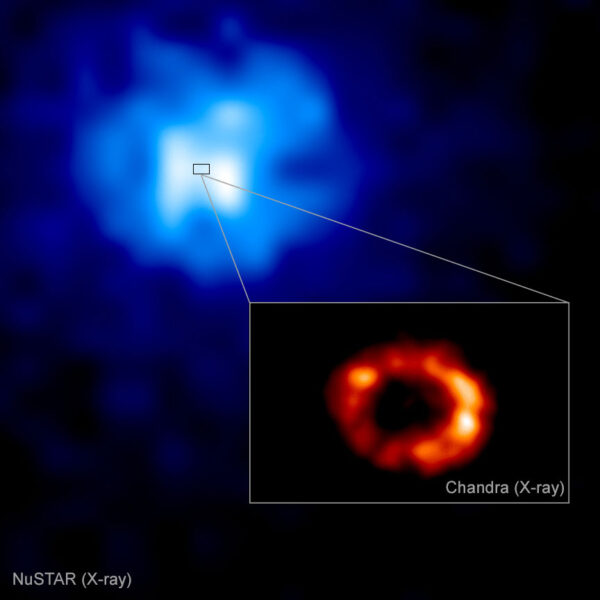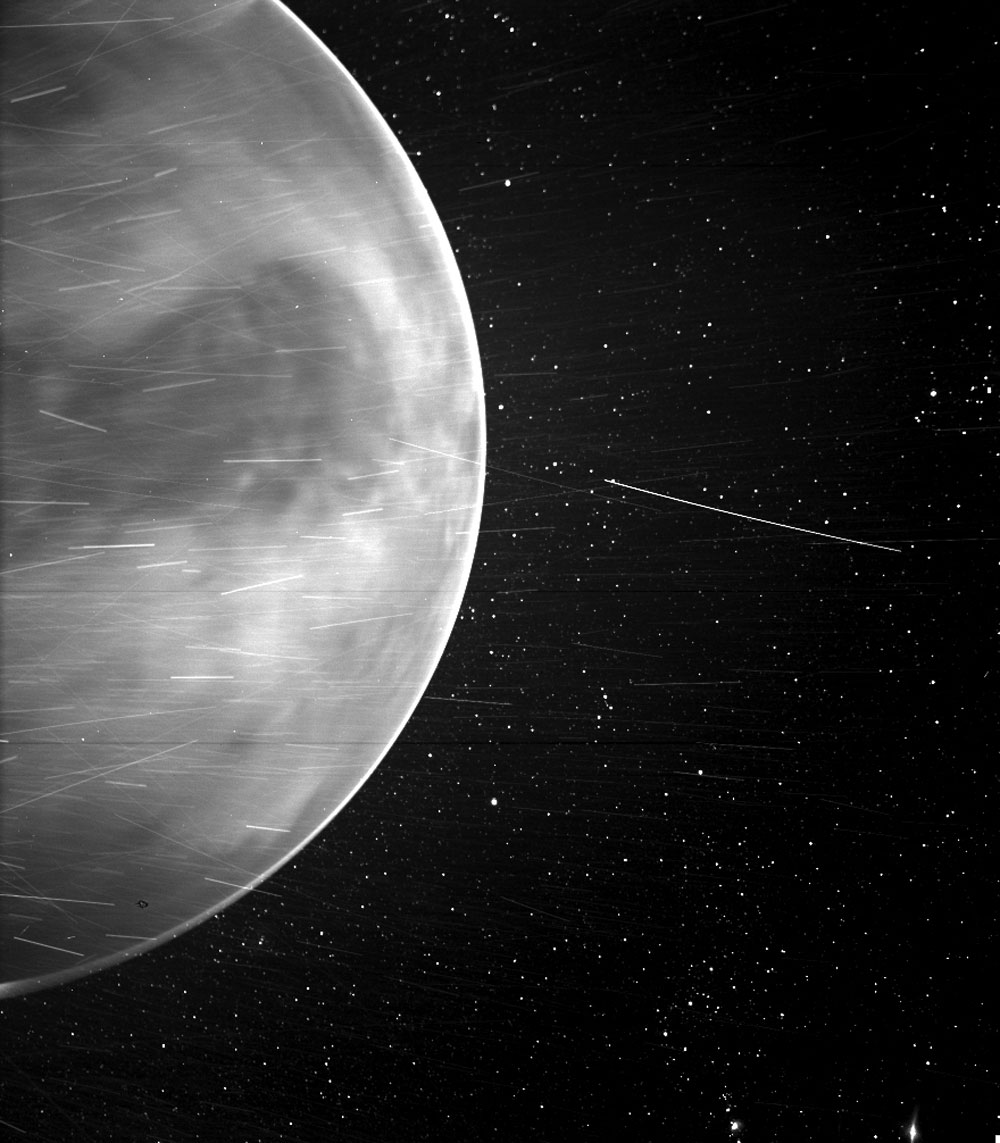This week: Astronomers have additional evidence for a pulsar at the heart of Supernova 1987A, and NASA’s Parker Solar Probe has released a stunning image of Venus.
Pulsar at the Heart of Supernova 1987A
What was it that went "boom" in 1987? That was the year a star went supernova in the neighboring Large Magellanic Cloud, leaving behind beautiful rings of shocked gas. As to the star itself, though, astronomers have pondered its fate for decades.
“For 34 years, astronomers have been sifting through the stellar debris of SN 1987A to find the neutron star we expect to be there,” says Emanuele Greco (University of Palermo, Italy). Some even suggested that the star might have ended up as a black hole instead. But recent evidence suggests astronomers have found the neutron star at last.

Chandra: NASA / CXC / Univ. di Palermo / E. Greco; NuSTAR: NASA / JPL-Caltech
Last year, astronomers used the Atacama Large Millimeter/submillimeter Array (ALMA) in Chile to image a small, glowing cloud that likely hides a neutron star within. Now, Greco leads a new study, to appear in the Astrophysical Journal Letters (preprint available here), that tackles this "blob" at both shorter and longer wavelengths, combining analysis of archived X-ray and radio observations with a state-of-the-art simulation to probe to back up this finding.
Comparing data from the X-ray space observatories Chandra and NuSTAR between 2012 and 2014, Greco and colleagues find a steady stream of high-energy X-rays coming from the region, which suggests there are high-energy particles spiraling around magnetic field lines within the supernova's gaseous remains. Radio emission from the same particles, detected with the Australia Telescope Compact Array, increased during the same timeframe. Simulations show the X-rays and radio waves alike most likely come from a wind of charged particles that's blasting off the pulsar.
There's still a possibility that what the astronomers are seeing is simply an echo of the supernova's shock wave. Time will tell: If the energy source comes from the pulsar wind, the X-rays ought to hold steady or decrease and the radio emission ought to increase.
While the team needs additional data to firm up this line of evidence, it's promising for future observers: If there's a pulsar within all the stellar debris, we should begin to see it emerge within the next decade or so as it clears away surrounding gas.
Read more in the Chandra X-ray Observatory press release.
Close-up View of Venus
NASA has finally released the stunning images that the Parker Solar Probe captured of Venus during its close flyby of the planet in July 2020. The onboard Wide-field Imager (WISPR) captured the nightside from 7,693 miles (12,380 km) away.

NASA / Johns Hopkins APL / Naval Research Laboratory / Guillermo Stenborg and Brendan Gallagher
WISPR can't image Venus's daylit side — it's too bright for the optics, which were designed to image the faint solar corona and solar wind. The camera was also designed for visible-light observations, so imagine the team's surprise when the images appeared to capture thermal emission from the planet's surface — specifically, the dark region named Aphrodite Terra — usually only visible at longer near-infrared wavelengths.
"We are trying to understand if the observed signatures are new results or infrared leakage," says WISPR project scientist Angelos Vourlidas (Johns Hopkins Applied Physics Laboratory). Either the WISPR camera can pick up infrared — in which case, new science investigations become possible — or it was able to see through a previously unknown "window" through the Venusian atmosphere. “Either way,” Vourlidas says, “some exciting science opportunities await us.”
Another nightside imaging opportunity presented itself more recently, on February 20th, when Parker conducted the fourth of its seven Venus flybys.
Read more about the image in NASA's press release.
 0
0









Comments
You must be logged in to post a comment.